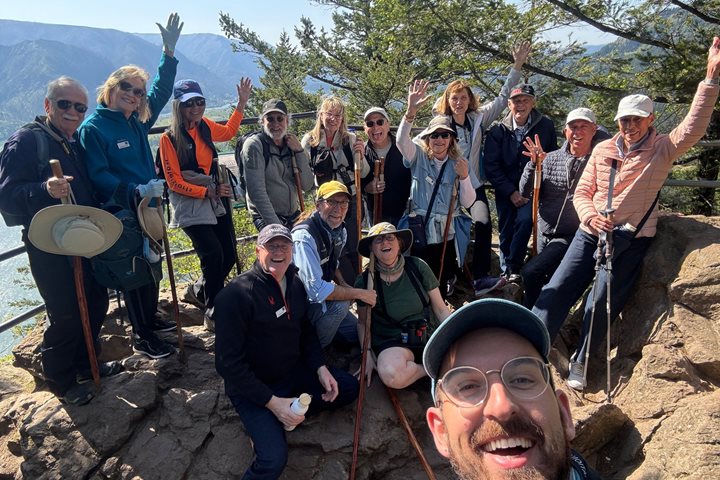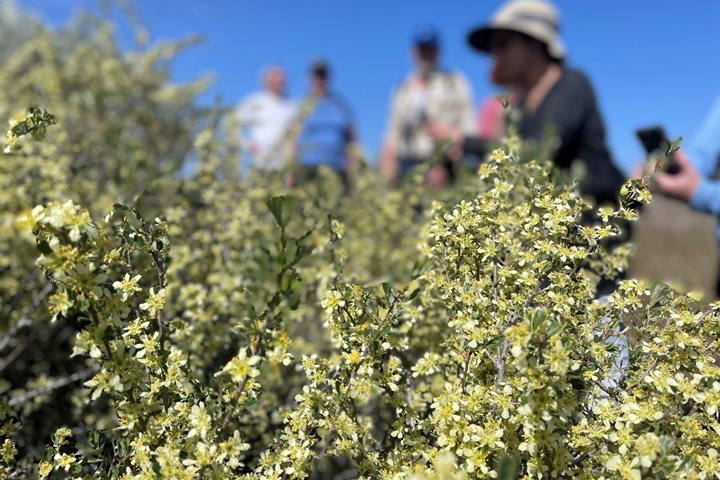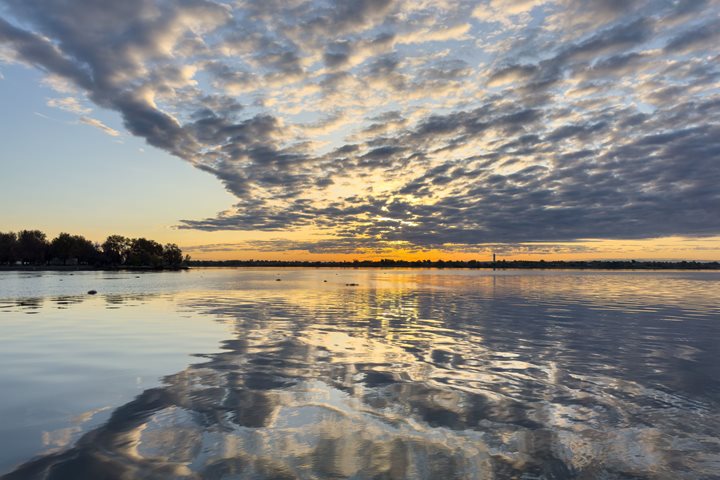Morning activities were a choice of a 2.5-mile nature hike, or a 5-mile longer hike. The 5-mile hike was a lovely trek on the first scenic highway in the United States: Route 33. Mr. Sam Hill, lawyer and entrepreneur who wanted access to local waterfalls and scenic views, created the pass. He and his engineer, Sam Lancaster, designed a road of gradual grade, wider areas around corners, and one of the first guardrails. Our section was for walkers only, giving us great views. Ponderosa pines, big leaf maples, and colorful poison oaks were along the trail. Later in the day, we explored the Columbia River Discovery Center, a wonderful interpretive museum with a garden of plants identified by Lewis and Clark. A pond behind the center brought grace to the beautiful garden.
4/24/2025
Read
National Geographic Sea Bird
Hood River
Unseasonably warm and dry weather continued to grace us as we proceeded with our expedition down the Columbia River. The morning was crisp as we disembarked in Hood River, Oregon, but quickly warmed up as we boarded our coaches. Our explorations began at Multnomah Falls, the number one tourist attraction in the state of Oregon. After we experienced this astounding cascade, some of our guests proceeded to Beacon Rock for a scenic climb up this 800-foot tall, aged lava plug. Others went to the Bonneville Fish Hatchery where we visited a local icon, Herman the sturgeon. Then both groups of explorers met at the Columbia Gorge Interpretative Center for Syncline wines and an overflowing helping of intriguing local history. As the superb weather continued, we voyaged back to National Geographic Sea Bird for a lovely afternoon of classic cruising down the Columbia River. Guests enjoyed the sun on deck or an engaging presentation on how climate change is affecting migratory birds. Complimentary water-level views of Multnomah Falls followed, and our last transit through a lock of this trip – a lovely passage through the Bonneville Lock and Dam. Photos by Doug Crispin and Alex Rubenstein







